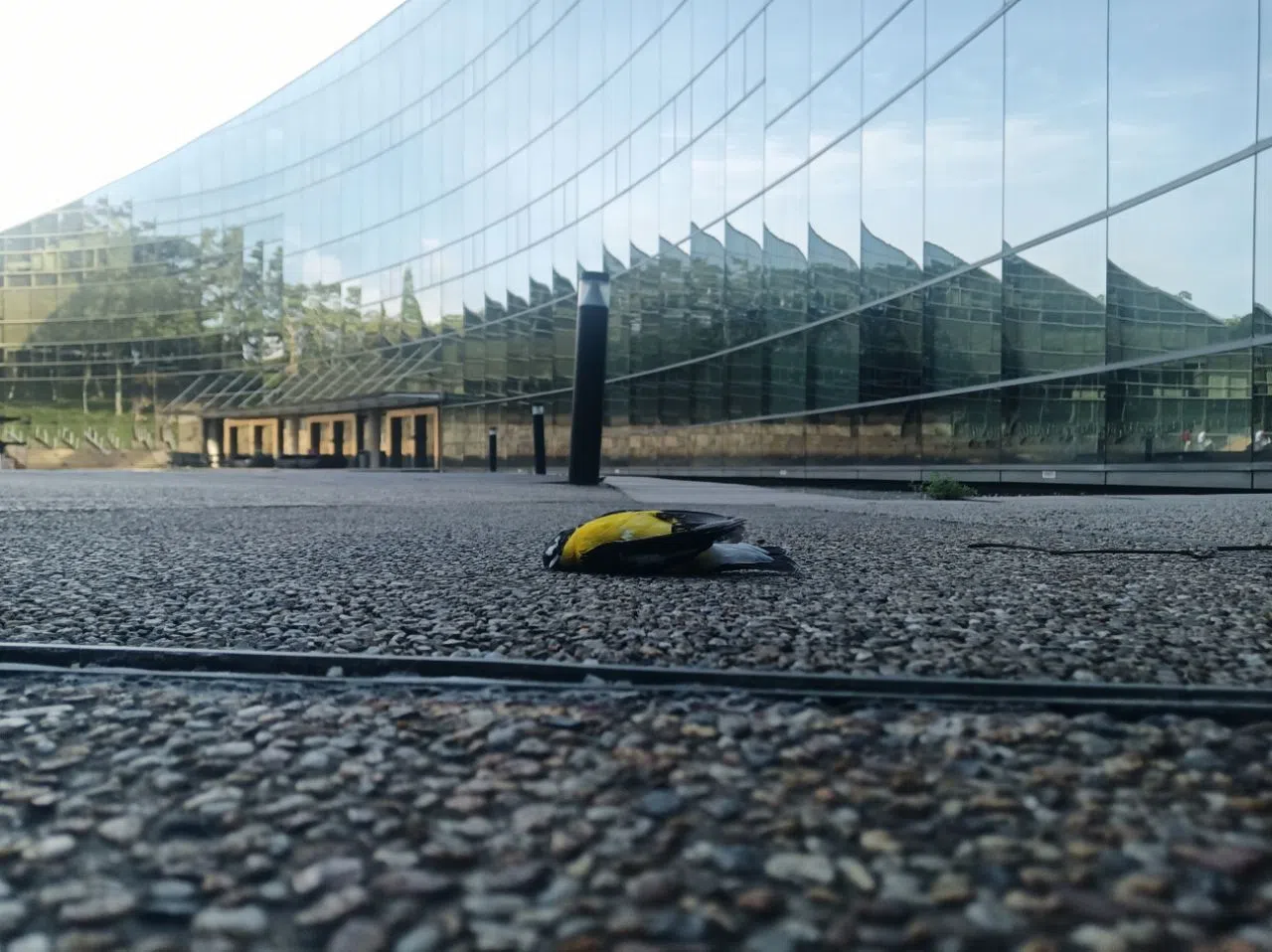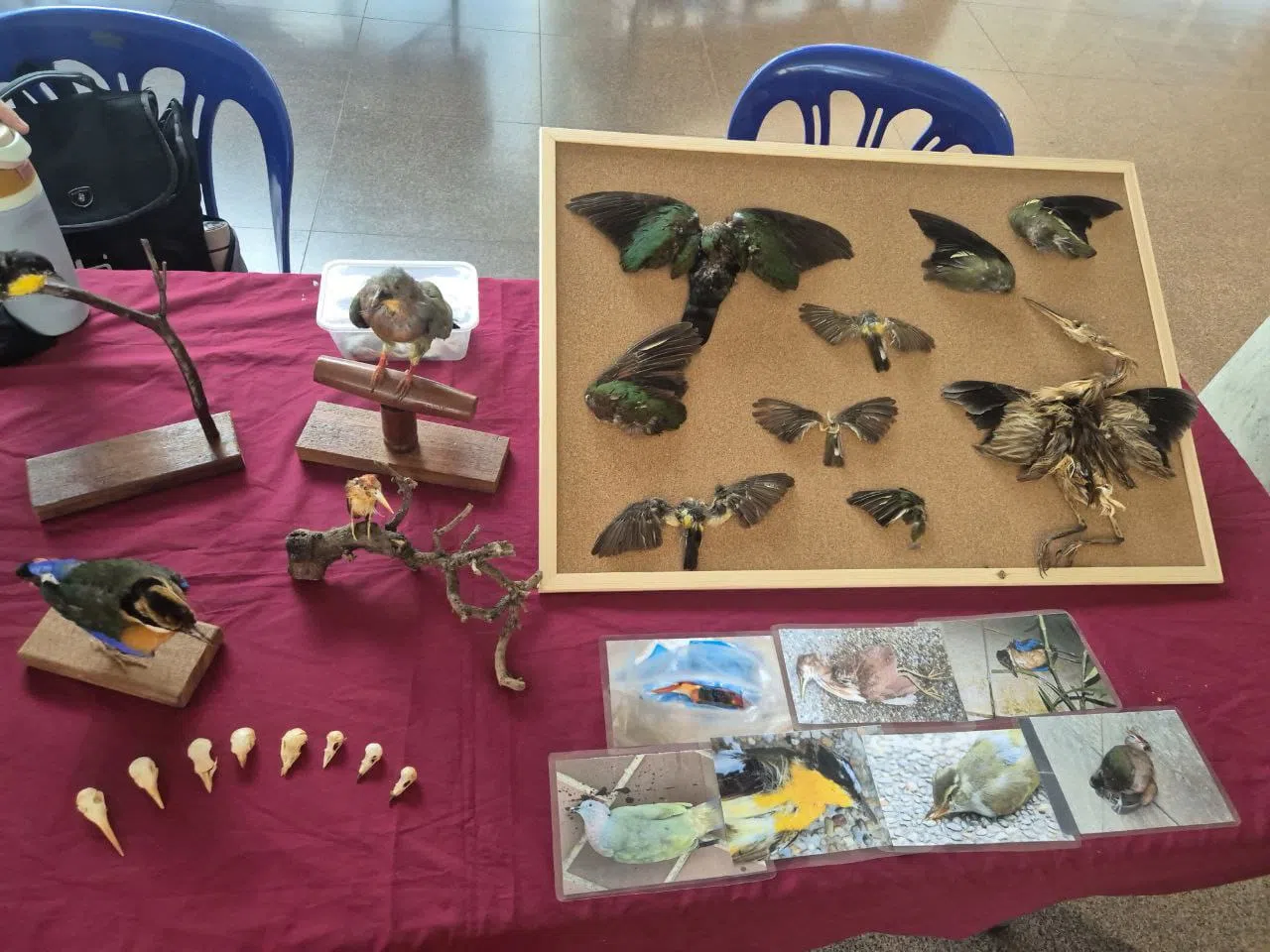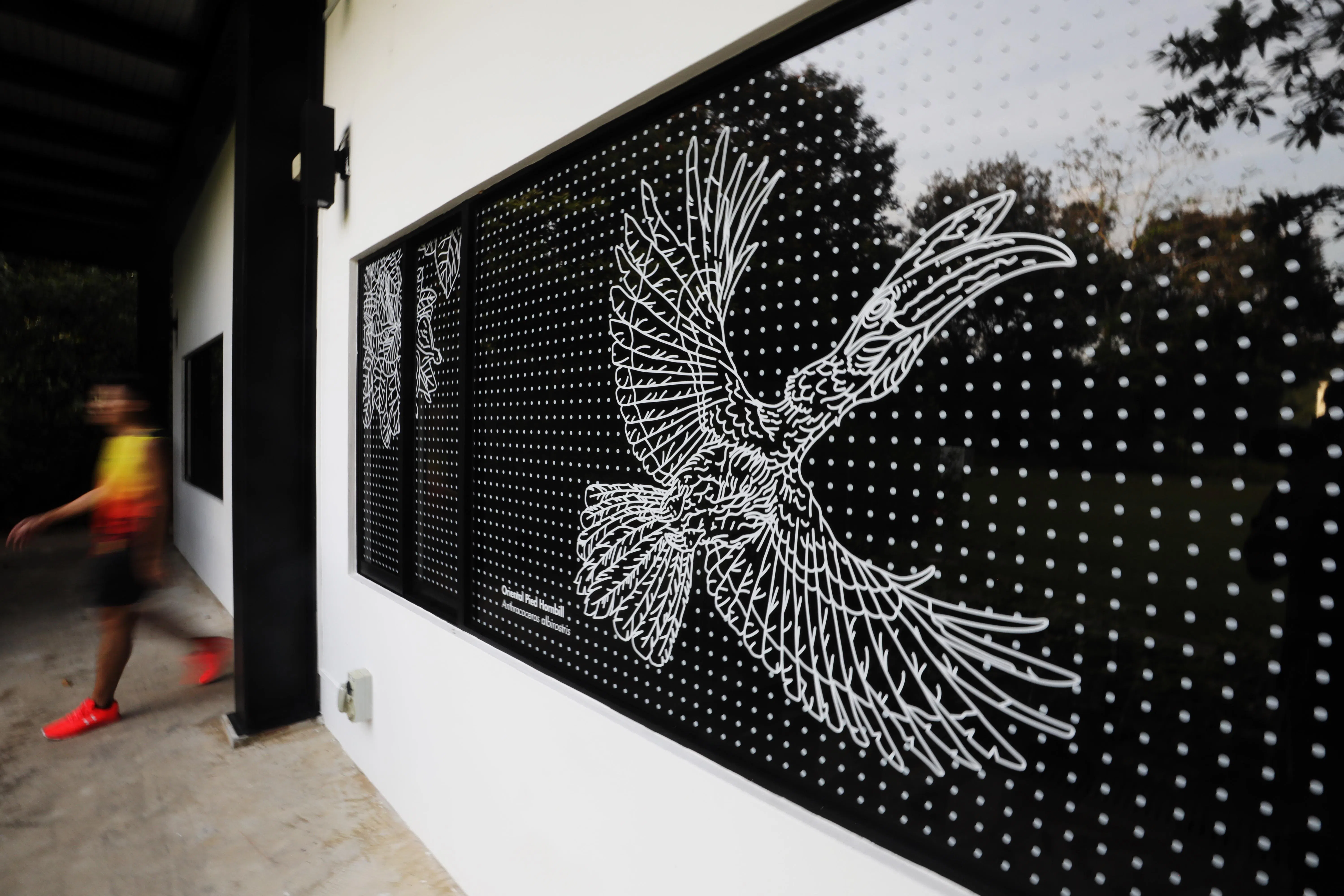SINGAPORE – For nearly two decades, an iconic building at Nanyang Technological University (NTU) has delighted visitors with its green, pitched roofs and efficient design, earning the university an award for environmental awareness.
However, shortly after the School of Art, Design and Media (ADM) building was completed, feathered visitors began dropping dead in the curved areas.
The birds had flown directly into the building's smooth glass facade, giving the impression that the windows were part of the sky and the surrounding landscape.
During the peak of the
Migration season to the south
When birds arrive in Singapore on their journey to escape the winter in the north, they collide with the ADM building almost every day, Tan Yen Yi, deputy senior curator of birds at the Lee Kong Chian Natural History Museum at NUS, told The Straits Times.
A total of 122 collisions involving 22 bird species were recorded by Project Avigate – an NTU student-led initiative – over the last three migration seasons.
“While the high number of reports from the building may also be an artifact of the students' monitoring efforts, it is clear evidence that this building is deadly to birds,” said Dr. Tan, pointing out that the phenomenon affecting all cities worldwide is “invisible yet deadly.”
After witnessing such a collision just meters from his dorm in September 2022, Mr Zachary Chong, then a student of Environmental and Earth System Sciences at NTU, and his colleagues launched Project Avigate to investigate the extent of this bird die-off and make the building safer for birds.

The collision witnessed by Mr. Zachary Chong in the NTU School of Art, Design and Media building in 2022, which triggered the Avigate project.
PHOTO: PROJECT AVIGATE
Mr Chong, now a 25-year-old environmental consultant, said: “In the month after we started the project, we saw scores of birds die in front of our eyes and in our hands.”
Since then, the project has grown to include more than 50 active volunteers, supported by scientists, architects and conservationists who share the vision of creating a safer and more sustainable campus.
On October 20, the project launched a fundraising campaign $30,000 for the placement of stickers that increase the visibility of the highest risk windows visible to birds. This accounts for a quarter of the glass surfaces.
A recent fundraising effort secured about 10 percent of the target amount, said Project Avigate co-founder Tang Kean Seng, 23, a final-year student majoring in environmental earth system science, public policy and global affairs.
The team is working to raise more money so the stickers can be installed before the next migratory bird season begins in September 2026.
The total is expected to cost $100,000, with the university pledging to fund 70 percent of the cost, he added.
This came after Project Avigate produced a 51-page report – submitted to NTU in April 2024 and published in October 2025 – which identified the glass, funnel-shaped architecture of the ADM building as the main cause Collisions.
Once surrounded by the glass, few escaped alive, the report said. Once a bird even hit the building four times before it died.
Project Avigate's highest daily record was achieved when the team prepared materials to raise awareness of the project on the building's plaza on October 25, 2022. That day, seven birds collided with the building within an hour.
“After the frantic rescue and extrication, the team was exhausted,” Mr Chong recalled. “But our thoughts turned to the two birds that hadn’t made it earlier that day.”
The students have also created an online page that documents some of the affected birds.
Mr Tang said: “While it is important to present our data in a technical report, it is equally important to let the public know that this issue is about more than just statistics: it is about the lives of these birds and how we can do something concrete to prevent such senseless deaths.”
A spokesperson for NTU's School of ADM said the university had implemented several measures recommended in the report, such as replacing roof garden lighting to reduce glare and reflection and installing protective netting to prevent birds from flying into enclosed spaces.

A display by Project Avigate during its fundraiser to raise $30,000 for the stickers.
PHOTO: PROJECT AVIGATE
Implementing the results was challenging as it required negotiations with many stakeholders, said Mr Tang.
This also included addressing concerns from finance and facilities management regarding the affordability, maintenance and durability of the proposed measures.
Any resistance only motivated the students to improve their designs so that the final proposed solution would be as effective and efficient as possible for all involved, Mr Tang said, adding that the students had engaged the school since the end of 2022.
He added: “We also organized a guided tour to show each office our perspective in the larger context of human-animal interactions on campus.”
“At the end of the walk they actually saw the bird collide with the window, which helped bring everyone on the same page.”

Bird-safe stickers on a HortPark building designed according to the National Parks Board's guidelines for bird-safe buildings that inspired Project Avigate.
PHOTO: ST FILE
The high cost of the decals was the team's most shocking discovery, Mr. Tang said.
“It turns out that their effectiveness is maximized when they are placed on the outside of the glass windows. Therefore, they also need to be heat and weather resistant, which only increases the cost,” he added.
“In addition, there were no commercially available options in the region for stickers designed to make buildings safer for birds.”
“To make matters worse, the cost of installation in large glass buildings is also high as such a large project requires additional equipment such as scaffolding.”
The spokesperson for NTU's School of ADM said the proposed decal system is a proven bird-safe design that is also used at the Singapore Zoo and is supported by the National Parks Board as part of its bird-safe building guidelines.
“The project will serve as a pilot to guide future bird-friendly construction efforts across the university,” he said.

A Hodgson's Hawk Cuckoo that collided with the ADM building and fell into a pond.
PHOTO: PROJECT AVIGATE
To dateThe total number of bird collisions recorded by Project Avigate across campus has exceeded 200 cases. Such collisions occur across the NTU campus, which often attracts wild visitors due to its proximity to the Western Catchment Forest.
The NTU spokesperson praised the student-led project for its proactive approach to bird conservationContribution to sustainability and an example of NTU's commitment to environmental protection and responsible design.
“With the support we have received, acting later will only result in unnecessary loss of life,” Mr. Tang said. “We hope our efforts can set a precedent for installing bird-safe solutions and spark a broader movement to make our other buildings safer for traveling birds.”
If you would like to donate to the good cause, you can do so at
this website
.
